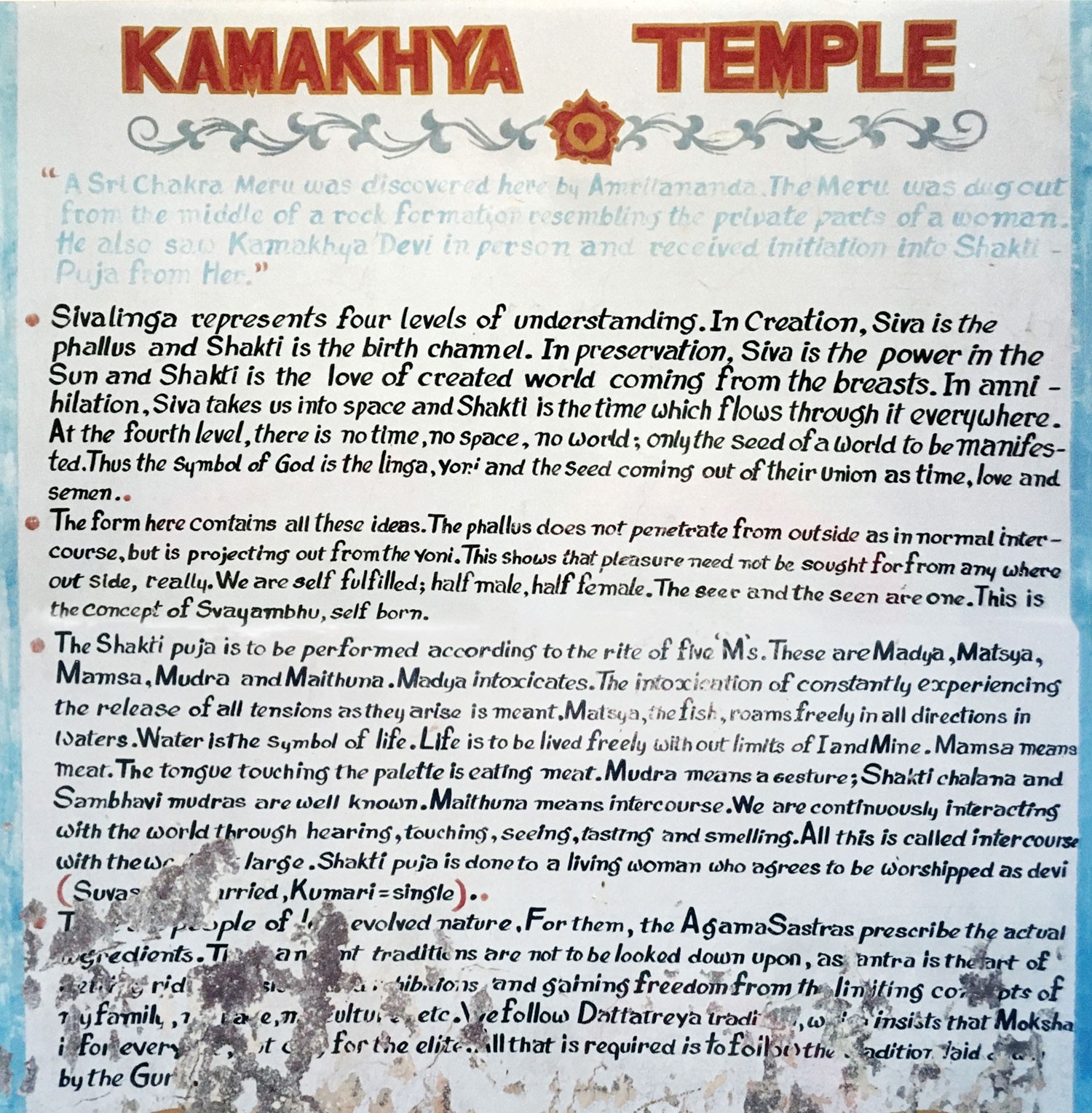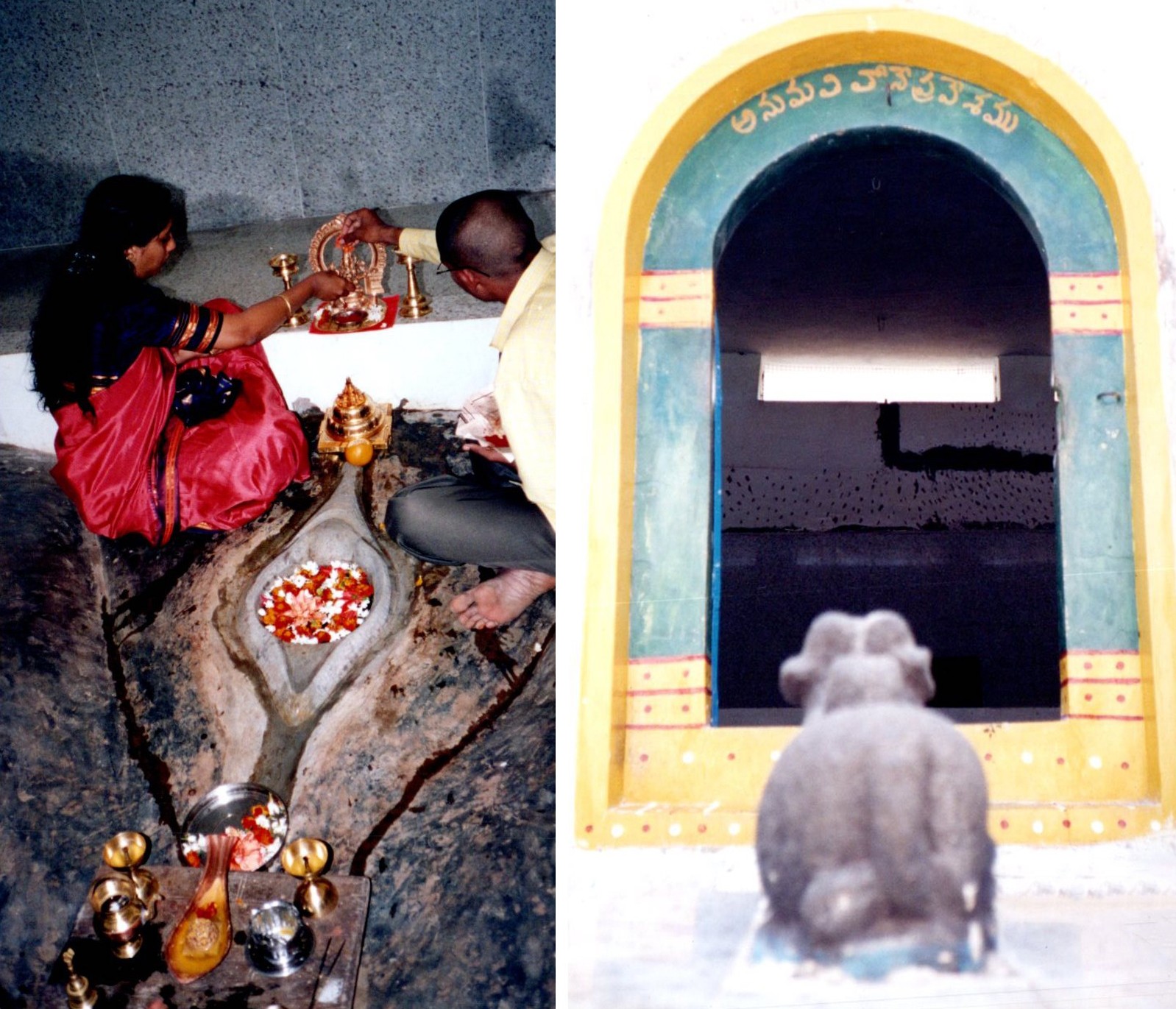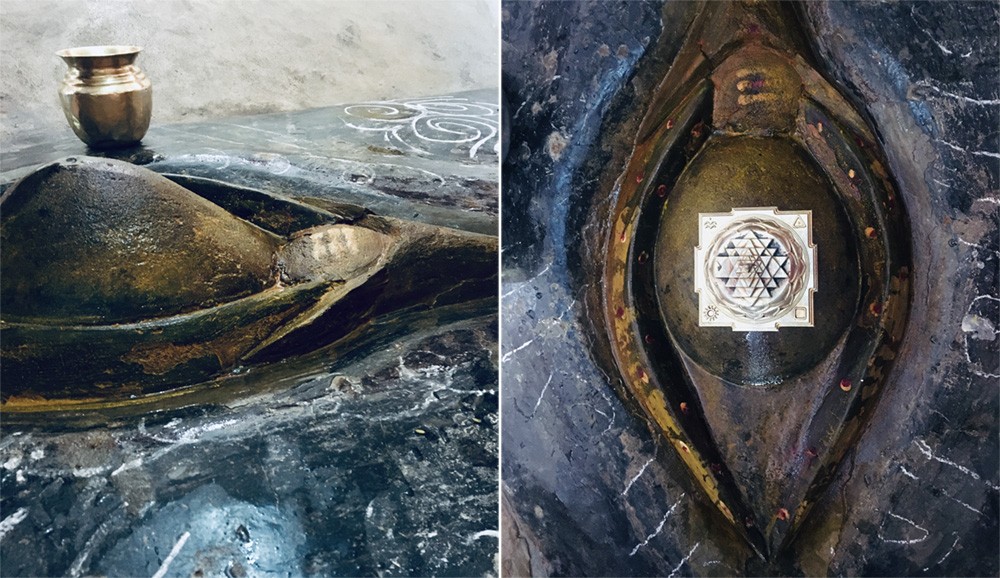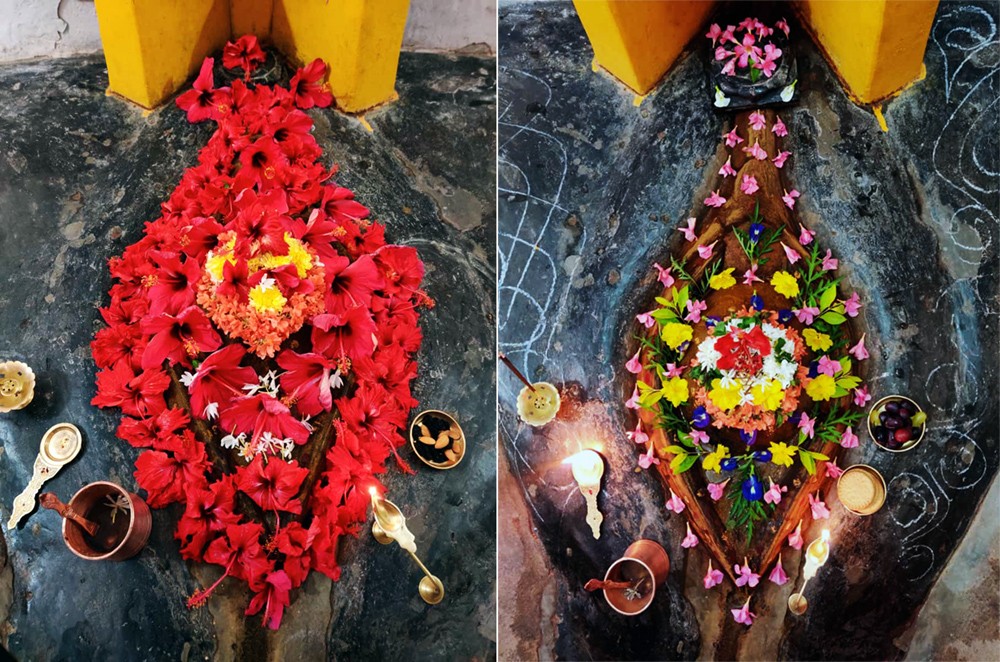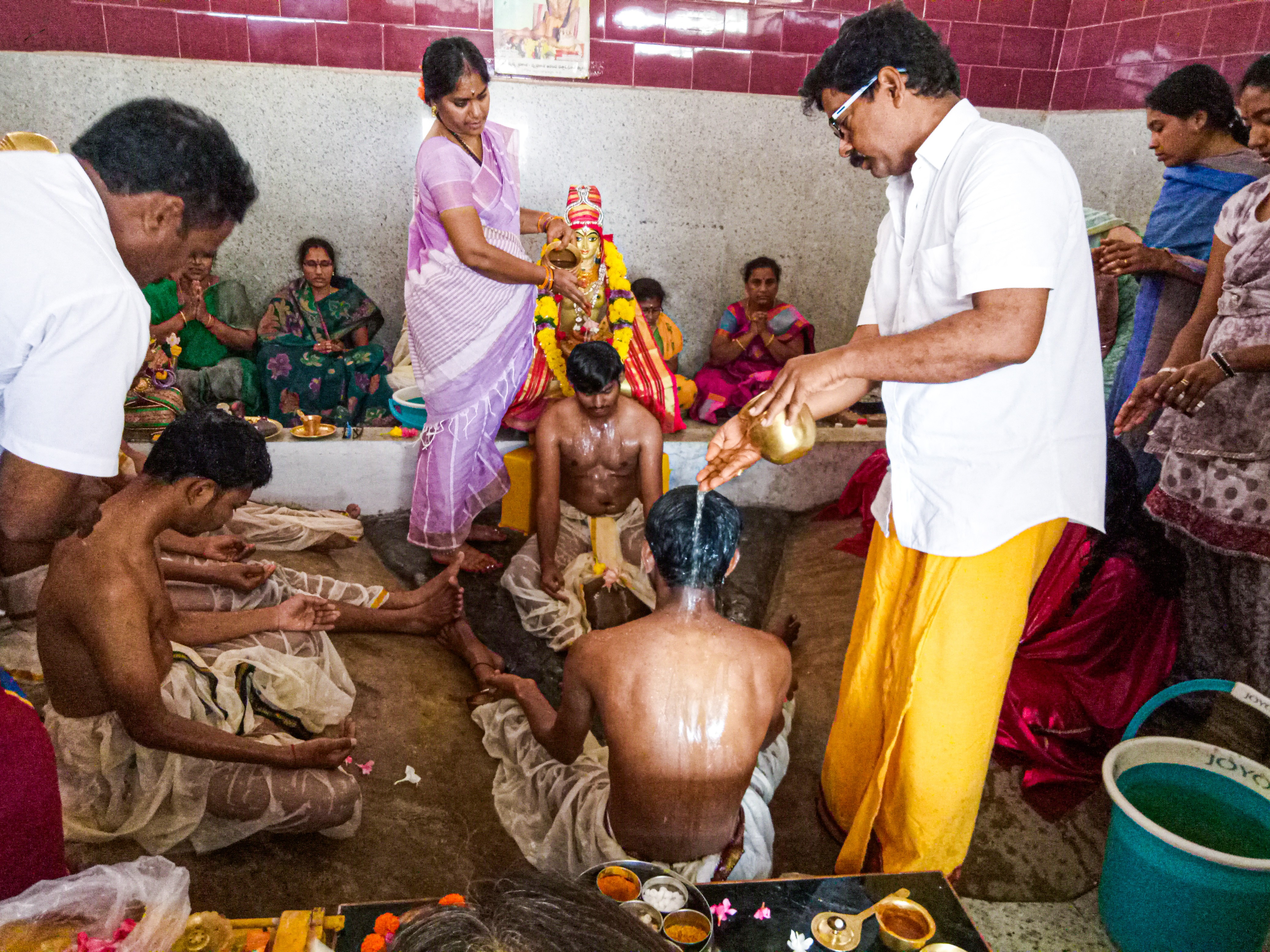- Edited
Darshan of Goddess Kāmākhyā:
In April 29, 1983, after performing Devi Yajña, Guruji addressed the gathered worshipers, telling them about his meditational experiences and the Devi’s apparent desire for him to build her a temple. Shortly thereafter he was approached by Putrevu brothers who donated to him a 3 acre land plot named Dongalamarri (“Thicket of Thieves”), located near the village of Narapadu, between the towns of Anakapalle and Sabbavaram.
One day while surveying the western slope of one of the parcel’s hills, Guruji spotted a large, oval-shaped tock, about 9 feet wide, with a triangular 6-foot crevice at its center. The formation was “very similar to that of the Kāmākhyā Pīṭham in Assam,” Guruji recalled. “It had obviously been cut by human hands a long time ago to resemble a woman’s thighs, with a triangular depression that had the distinctive features of the yoni, a woman’s genitals.” Crystal-clear water trickled out of the crevice in a small rivulet. He took careful note of the yoni’s location so that he could easily find it again. From that day, it became the focal point of his visits.

It was on one of these visits to the forgotten Goddess shrine that a transformative encounter took place. The date was Sunday, July 24, 1983, the height of summer and the day of the Guru Pūrṇimā full moon. Almost as soon as he had settled into his meditation posture, Guruji felt powerful vibrations radiating upward through his body and began slipping into a deep trance-like state.
Then Devi Kāmākhyā appeared in front of him. She asked Guruji to perform pūjā to Her, which he did. Afterward, “She embraced me and told me I would feel this embrace always,” he concluded. “And with that, She vanished back into the triangular pit in the rock.”
Instructions to Build Two Temples:
After some time Kāmākhyā again appeared to Guruji in the form of “a devastatingly beautiful girl of 16 years,” and told him, “I am the blissful state of Goddess Bhairavī, residing here in the form of Kāmākhyā. Lord Śiva dwells in this place too, as its guardian. His natural presence here is special and auspicious. You will build a temple to him atop this very hill!”
Then speaking of the yoni formation itself she said, “This crevice, shaped like the triangle within the Mūlādhāra Cakra, evokes the Universal Womb. Its waters have alchemical powers and you will find me here blessing all with success, and bestowing love upon everyone. Together with Lord Śiva, I create and sustain life. We are here to help you.”
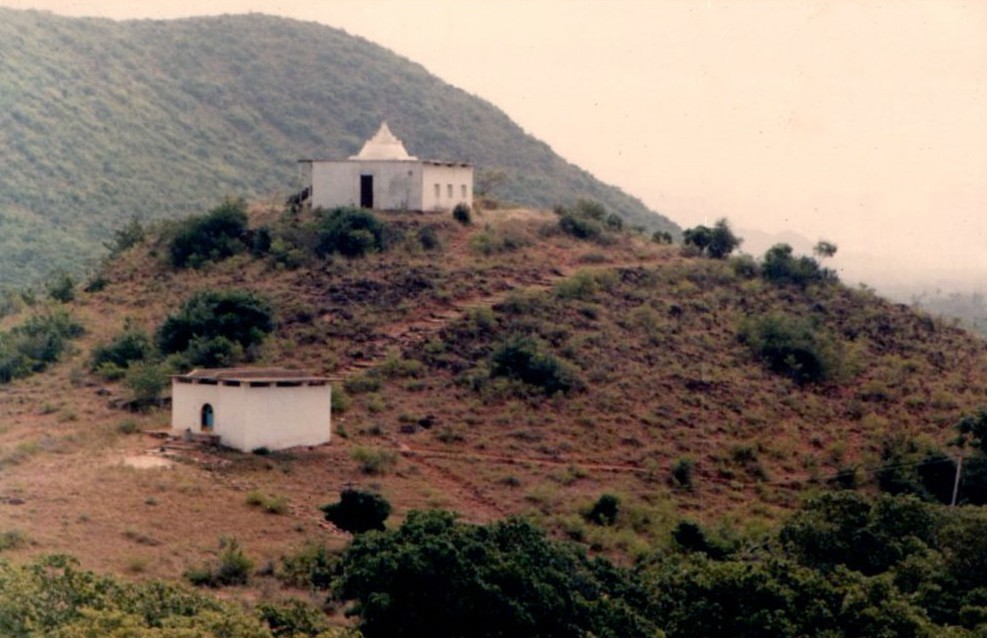
Following these instructions, in 1983 Guruji built two temples upon this hill—one at the very top dedicated to Śiva (Śivālaya), and another at the yoni-shaped ledge itself on the slope, dedicated to Kāmākhyā.
Finding the Unique Śrī Cakra Mahāmeru:
During another meditation at the yoni, Guruji felt himself swept back through time. He saw a magnificent fire ritual being performed on the very spot where he sat, which was taking place at least two centuries earlier. Kāmākhyā seemed to be showing him an episode from the history of her shrine. Guruji experienced himself lying at the center inside the homa kunda, while four priests were performing a homam with the flames emanating from his body.
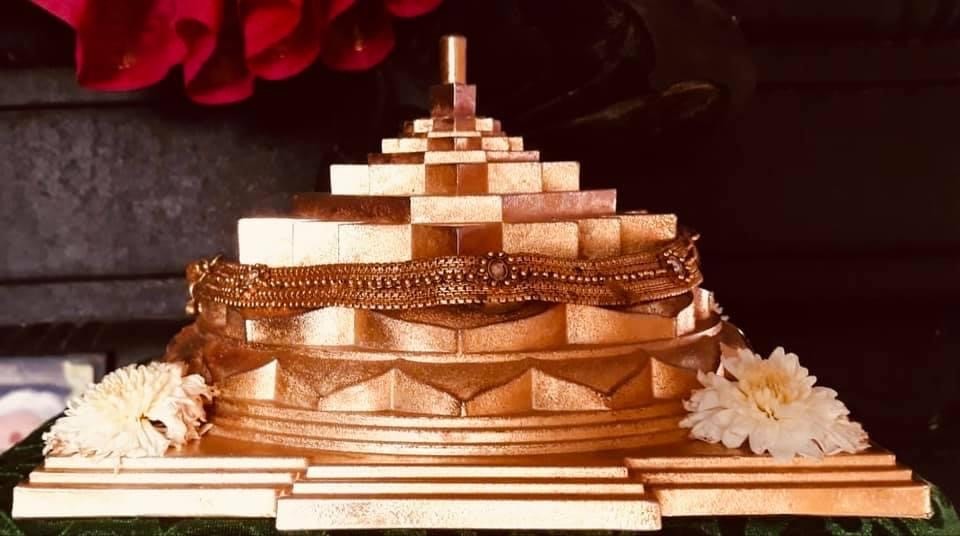
During purnahuti, he felt a heavy object being placed on his heart. Awakening from his meditative state, Guruji was prompted to dig that site. Unearthed from that very spot, he found a unique Śrī Cakra Mahā Meru made of five metals. Kāmākhyā instructed him to install it in the sanctum of the Śiva temple he would build atop the hill. That old Meru had been worshiped in Śivalaya for some years. Later it was brought back to Kāmākhyā, before finally being reburied at the place where he first found it.
Sources: "Goddess and the Guru", "Kamakhya Told Amrita"


